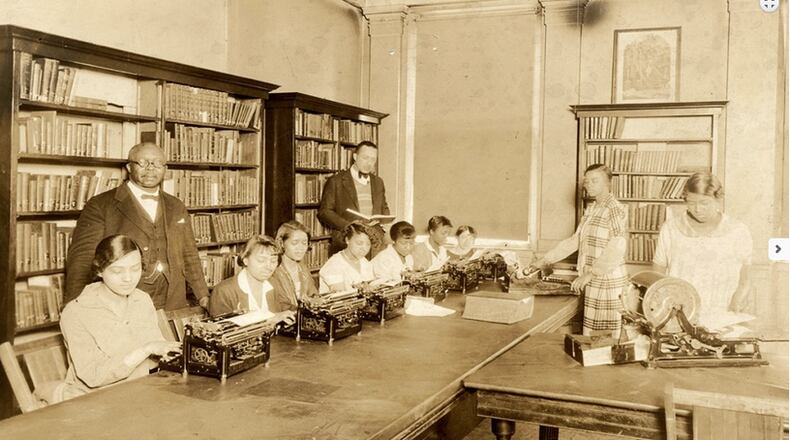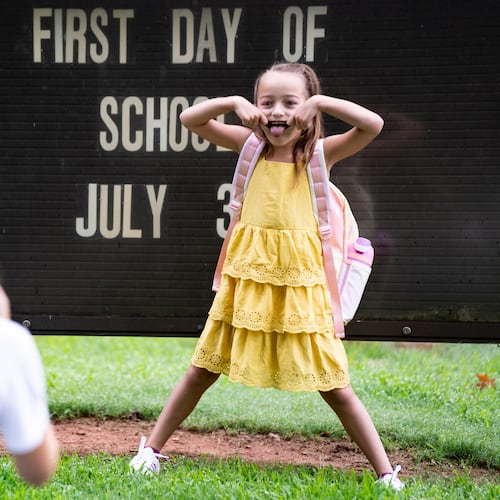- Simmons is the only HBCU resurgence in HBCU history and is the only "comeback HBCU" in America.
- Simmons is the only HBCU who, having lost its campus in 1930 to the University of Louisville, returned to its original campus 77 years later and now owning it debt free.
- Simmons is the only private HBCU in Kentucky.
- Simmons is the fastest growing college, percentage wise, in the Commonwealth of Kentucky.
- Simmons has more African American males than females enrolled.
In late 1865, just four months after the end of the Civil War, 12 freed slaves – making up the General Association of Baptists in Kentucky – sat down with the idea of building a school for the sons and daughters of former slaves that were now all over the Blue Grass State.
By 1873, the school they envisioned was chartered it and by 1879, the Kentucky Normal and Theological Institute -- known today as Simmons College of Kentucky -- was accepting students under the leadership of president Elijah P. Marrs.
In 1884, with William J. Simmons, the Institute’s second president at the helm, enrollment grew to over 200 students and the school was renamed State University.
The college grew, offering classical higher education courses, as well as practical courses that would help former slaves matriculate in a free society. The students yearned for the opportunity to make the most of their lives and made excellence the standard for their intellectual attainment.
Along with studies in theology, multiple departments were developed with the participation of proprietary schools offering training in nursing, law, medicine and other highly professional degrees.
The building, currently known on the original campus as Parrish Hall, was erected in 1908 by the Baptist Women’s Education Convention, the oldest black women’s convention in America.
The convention was organized for the distinct purpose of advancing the college through moral and monetary support.
In 1918, State University graduate Charles Parrish took over as president and renamed the school Simmons University in honor of William J. Simmons.
Simmons soon enrolled more than 500 students and became the college of choice for Kentucky’s black middle class.
In 1924, the building currently known on the original campus as Steward Hall, was built.
But in 1930, in the midst of the Great Depression, Simmons lost its campus through foreclosure and was given a mandate to downsize its course offerings to only instruct courses in theology.
The Simmons campus was sold to the University of Louisville and became home to Municipal College for the Colored, University of Louisville’s segregated division.
Now homeless and believing that "God takes care of the widows and the orphans," Simmons University moved into the Black Orphanage at 18th and Dumesnil streets. It continued to offer religious and theological studies.
In 1950, Axton Hall was erected behind the Orphanage, which mimicked in miniature fashion the building the college previously built in 1924 as a symbol of Simmons’ determination to keep going.
In 1951, when the University of Louisville integrated it closed Municipal College and sold Simmons University’s original campus to the local public school system. The University of Louisville hired Simmons faculty member, Charles H. Parrish, Jr., the son of the former Simmons president, Charles H. Parrish, Sr., making him the first African American faculty member and department chair at a public institution of higher learning in the South.
In 1996, the St. Stephen Baptist Church purchased the original campus of Simmons University and in 2005, the church's pastor Kevin W. Cosby became the 13th President of Simmons and renamed the school, Simmons College of Kentucky.
In 2007, after 77 years as an “orphan,” Simmons returned to its original campus.
Even though the school was back home, there was still a major sticking point. After more than a century in existence, the school had never been accredited. And ironically, because of that – despite the fact that it was started by former slaves to educate former slaves – it was never officially listed as an HBCU.
Cosby wanted to change that and the process began in 2006, a year after his arrival.
In 2010, Simmons College attained “Candidate Status” with the national faith-based accreditor, the Association of Biblical Higher Education (ABHE), which is recognized by both the United States Department of Education and the Council on Higher Education Accreditation (CHEA). Upon receiving “Candidate Status,” Simmons soon attained Title IV eligibility and signed an articulation agreement with the University of Louisville to allow students to more easily transfer general education credits.
In February, 2014, Simmons received national accreditation from ABHE. The accreditation also included approval of Simmons’ first non-religious degree program offering, the Associate of Arts in General Studies.
Additional degree programs were approved by the Kentucky Council on Post-Secondary Education and ABHE in July, 2014 to include, Bachelors of Arts in Sociology, Bachelor of Arts in Communications (Cross-Cultural Emphasis), and the Bachelor of Arts in Business (Entrepreneurship Emphasis).
It was then that Simmons became eligible to apply to the U.S. Department of Education to attain designation as a Historically Black College and University.
In April, 2015, Simmons College of Kentucky, chartered in 1873, became the newest HBCU in America.
In 2015, Simmons College received $5 Million from local foundations and acquired additional property for an administration and library building.
A new band program has started and the athletic program has been reinstituted. Administrators are expecting to have an enrollment of at least 500 students in the fall of 2016.
Keep Reading
The Latest
Featured


